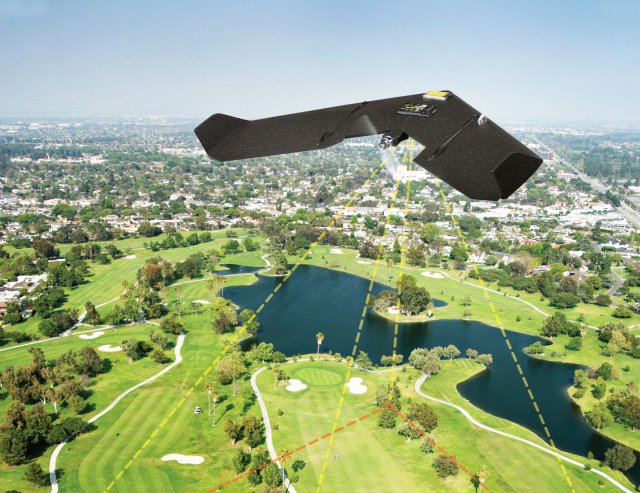 UK aerial survey company Bluesky has launched a fast response aerial survey service using state of the art unmanned aircraft.
UK aerial survey company Bluesky has launched a fast response aerial survey service using state of the art unmanned aircraft.
The technology, originally developed by the military, includes Artificial Intelligence (AI) guided autopilot, high resolution integrated camera and environmentally friendly rechargeable propulsion system. Autonomous take-off and landing ensures the system is easy to use and with a wingspan of less than a metre it can be easily transported without the need for complex assembly.
“Using UAS we can respond quickly to demands to collect site specific images and data in a very cost effective way,” commented James Eddy, Technical Director at Leicestershire based Bluesky. “The integrated camera captures high resolution photogrammetric images that can be used to create map accurate aerial survey data including height models. The system is compact and lightweight making it easy to store and transport and can be launched by hand from virtually any location. Flight planning software and an Artificial Intelligence guided autopilot make it easy to control and the system will gently and safely return to the ground with a single touch of a button.”
Potential applications of Bluesky’s UAS solution include open cast mines or quarries or even landfill sites where large volumes of material are extracted or moved on a regular basis. The geographically accurate imagery would provide a record of activity at a given point in time and the highly detailed height models could be used to measure stockpiles, cut and fill volumes and for facilities management and safety monitoring.
Large scale construction sites can also be surveyed, at regular intervals or predetermined points in time, providing data for project management, reporting and funding. The height data can be used for line of site calculations to ensure compliance with planning applications or cut and fill calculations for project invoicing and for the creation of realistic 3D images for marketing or KPI reporting.
With an option of additional sensors mounted on the UAS Bluesky is also exploring agricultural applications monitoring crop growth or irrigation and identifying locations for higher value crops or high yield areas. The system can also be used to identify fields with potential for solar panels and model the number, position and potential generation.
Additional applications are expected from within the leisure industry – specifically golf courses where the map accurate images and height models could be used to create yardage books, feed digital caddy systems and used to develop stroke manager solutions. The geographic data could also be used to support fairways design, construction and management.
Source: Press Release

A great concept but how is this going to operate at sufficent hight and therefore within CAA regulations? If you have found a solution I would really like to know, thanks